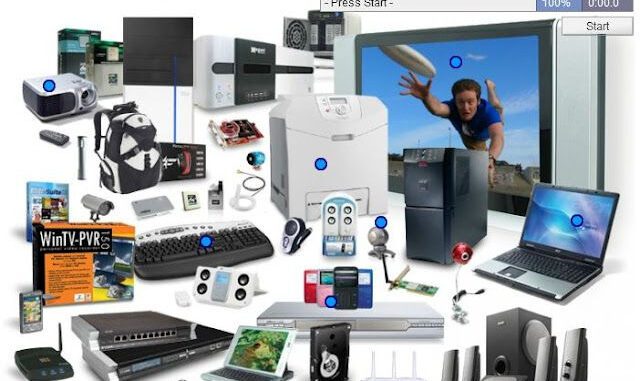
This lesson is compatible with the Sri Lanka school OL ICT syllabus – Grade 10 Lesson 2 is Fundamentals of a computer system. After studying this chapter, you will be able to understand the following:
- features of a computer,
- classification of computers,
- functions and devices of a computer system,
- basic components of a computer,
- computer ports and,
- computer network.
You can get better practical knowledge by watching the given videos related to the topics mentioned in the syllabus of this lesson. By clicking on the relevant categories, you can see the description of the lesson related to the topic
? Learning Video Option 1 – Sinhala Medium – Play List Included 6 Videos with Question discussion
-

2 වන පාඩම | පරිඝණකය හදුනාගනිමූ - 4 වන කොටස | තොරතුරු හා සන්නිවේදන තාක්ෂණය | 10 වන ශ්රේණිය
-

2 වන පාඩම | පරිඝණකය හදුනාගනිමූ - 3 වන කොටස | තොරතුරු හා සන්නිවේදන තාක්ෂණය | 10 වන ශ්රේණිය
-

2 වන පාඩම | පරිඝණකය හදුනාගනිමූ - 2 වන කොටස | තොරතුරු හා සන්නිවේදන තාක්ෂණය | 10 වන ශ්රේණිය
-

2 වන පාඩම | පරිඝණකය හදුනාගනිමූ - 1 වන කොටස | තොරතුරු හා සන්නිවේදන තාක්ෂණය | 10 වන ශ්රේණිය
Given below is a series of notes prepared in relation to your syllabus.
For an enlarged view of the Note ? Click Here
Related resources and links to this lesson
Text Book Lesson Note Download Questions MCq
The computers that we use can be divided into different types. There are various classifications of computers according to the size and the technology used. Hence, computers can be classified as follows;
Learning Video – English Medium
Learning Video – Tamil Medium
The fundamentals of a computer system are:
- Hardware: The physical components of a computer system, including the central processing unit (CPU), memory, storage, input/output devices, and other peripherals.
- Operating System: The software that manages the computer’s resources and provides an interface for users to interact with the computer. Examples of operating systems are Windows, macOS, and Linux.
- Memory: The temporary storage space for data and programs being processed by the computer. There are two main types of memory: random access mem
 ory (RAM) and read-only memory (ROM).
ory (RAM) and read-only memory (ROM). - Storage: The long-term storage space for data and programs on a computer, including hard disk drives (HDD), solid-state drives (SSD), and removable storage media such as USB drives.
- Input/Output Devices: The components that allow the computer to receive data (input) and present information (output), such as a keyboard, mouse, monitor, and printer.
- Processor (CPU): The central processing unit is the “brain” of the computer, responsible for executing instructions and performing calculations.
- Network Connectivity: The ability of a computer to communicate and exchange data with other computers and devices over a network.
- Application Software: The programs that run on a computer to perform specific tasks, such as word processing, web browsing, or video editing.
These components work together to form a complete computer system, and understanding their function is essential for anyone interested in computer science or technology.
Features of Computer
Computer systems have come a long way since their inception, and today’s computers are capable of performing an incredibly wide range of tasks. The features of a computer can be broadly categorized into hardware and software features.
Hardware Features:
- Processor: The central processing unit (CPU) is the “brain” of the computer and is responsible for executing instructions and performing calculations.
- Memory: There are two main types of memory: random access memory (RAM) and read-only memory (ROM). RAM is used for the temporary storage of data and programs, while ROM stores permanent data and instructions.
- Storage: Computers use various forms of storage, including hard disk drives (HDD), solid-state drives (SSD), and removable storage media such as USB drives.
- Input/Output Devices: A computer uses various input and output devices to interact with the user and the outside world, including keyboards, mice, monitors, and printers.
- Network Connectivity: Modern computers often come equipped with various network connectivity options, such as Wi-Fi, Ethernet, and Bluetooth, allowing them to communicate and exchange data with other devices.
Software Features:
- Operating System: The operating system (OS) is the backbone of the computer, managing its resources and providing an interface for users to interact with the computer.
- Applications: Computers come with a variety of pre-installed applications, ranging from productivity software like Microsoft Office to multimedia applications like iTunes.
- Security: Computers have various security features, such as firewalls, antivirus software, and encryption, to protect against cyber threats and unauthorized access to data.
- Internet Connectivity: Most modern computers come equipped with internet connectivity options, allowing users to access the internet, browse websites, and communicate with others.
- User Interface: The user interface (UI) of a computer refers to the way users interact with the computer, including the visual design, navigation, and control elements.
In conclusion, the features of a computer can greatly vary depending on the specific model, but the core hardware and software components remain largely the same. Understanding these features is essential for anyone interested in computer technology, as it helps to better appreciate the capabilities and limitations of computer systems.
external resources.





 ory (RAM) and read-only memory (ROM).
ory (RAM) and read-only memory (ROM).
Leave a Reply